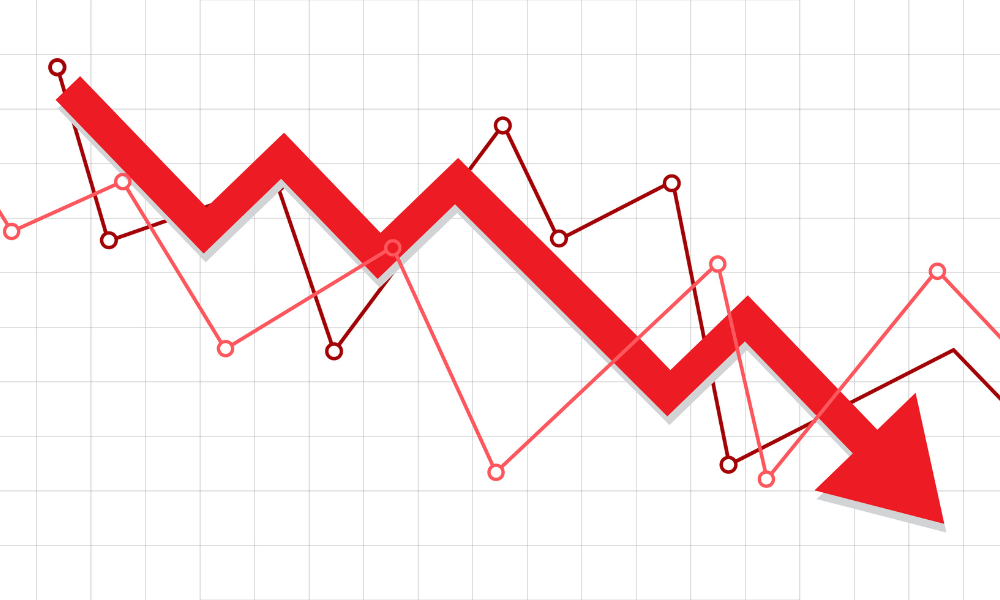Chief Economist at RBC GAM breaks down the impact of consumption in Q4 and highlights how investors & markets might react to a weakening consumer

The holiday season might start after Halloween these days, but Black Friday — the Friday of the American Thanksgiving weekend — marks the biggest shopping day of the biggest shopping season of the year in North America. In the leadup to November, however, consumer confidence has weakened. Reports from both sides of the border show that US and Canadian consumers are starting to struggle with both inflation and higher borrowing costs. As we enter a season when consumer spending appears to matter most, weaker consumer sentiment may indicate a rough period ahead for the US and Canadian economies.
Eric Lascelles, Chief Economist at RBC Global Asset Management (GAM), explains that this weakening in consumer sentiment has come later than many expected. Given the pace of rate increases since the start of 2022, American and — to a lesser extent — Canadian consumers have been surprisingly resilient. Lascelles outlines why we have begun to see cracks in that resilience and what it could mean ahead of a sensitive holiday season.
“The headwinds are beginning to blow more fiercely, we are seeing unemployment rates begin to rise in both Canada and the US…interest rates have increased quite a lot and that is nibbling away at the capacity of American consumers to spend, and rapidly eroding the ability of Canadians to [spend] given a higher level of rate sensitivity,” Lascelles says. “We do believe that the increase in interest rates and the fragility of the of the cycle mean that there's a pretty high chance of a recession. And, of course, that's generally when consumers retrench.”
Lascelles’ picture is not entirely gloomy. He notes that employment data has been strong and wage growth has largely outpaced inflation. That means real purchasing power is rising. Nevertheless, interest rate sensitivity in Canada means rate hikes have pulled money out of consumers’ pockets as they manage higher mortgage payments. The wealth accumulated by consumers during the pandemic, too, has also been diminished significantly — if not totally spent. Finally, US student debt repayments began again on October 1st, meaning around 43 million Americans are now spending hundreds of dollars per month on debt repayment again.
All these trends have informed a softer outlook for consumer spending. Retail sales in Canada, Lascelles notes, have fallen and are now tracking flat which — given population growth and inflation — means on a per capita basis Canadians are purchasing less. In the US, credit card spending has jumped along with delinquency rates, which Lascelles describes as a “canary in the coal mine” for a struggling US consumer. Lascelles also notes that retailers may be predicting a weaker holiday season already, as many haven’t pursued the same seasonal hiring policies they’ve pursued in previous years.
But what does a weaker consumer mean for investors in Q4? Looking at historic US data, Lascelles notes that December retail sales are around 15% more than average, typically. He remarks that he actually expected a higher number in December but speculates that analysts may still perceive a greater importance in retail numbers from Q4 overall.
As they anticipate a recession and read data about consumer weakness, Lascelles says the team at RBC GAM is reducing risk in their portfolios. They’ve holding an overweight in fixed income and an underweight in equities with a view that there could be weakness ahead. Lascelles believes that markets are now predicting a soft landing, but if we see this weakness in consumer spending manifest meaningfully over the holidays there could be a correction on the market. Consumer discretionary stocks, he says, would be among the highest risk subsectors in this scenario.
As advisors look closely at this level of consumer weakness and prepare their clients’ portfolios, Lascelles believes that they should be ready for a changing narrative, one where consumer resilience gives way to struggle.
“I think we’ve all been impressed by the resilience of economies and in particular by the enthusiasm of consumers, so it’s tempting to conclude that story persists forever,” Lascelles says. “But some things have changed. We’ve seen households significantly spend through their accumulated savings from the pandemic. We are beginning to see the labour market turn. Higher interest rates are starting to bite. I think it’s important to recognize that the narrative of the resilient consumer might not be long for this world. We need to expect greater caution from consumers and weakness from the companies that service them.”



